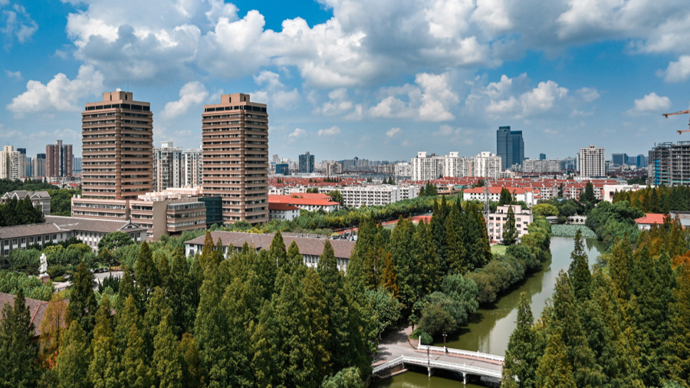
"Our research cases have found that large artificial intelligence models have a tendency to 'clickbait'." Zhou Baohua, deputy dean of the School of Journalism at Fudan University, revealed when analyzing the duality of generative AI communication research that another of his research cases also found that, As a new medium of communication, large models also have different representations of public opinion in different countries - "Artificial intelligence has its own value positions and biases, and behind this lies the problem of global inequality."
Some people say that "journalism has no learning", so is journalism becoming more "learningless" in the era of artificial intelligence? On the occasion of the 20th anniversary of the establishment of the School of Communication at East China Normal University, more than 30 deans of relevant disciplines across the country gathered at the Dean’s Forum on "Journalism and Communication Discipline Development and Talent Cultivation in the Artificial Intelligence Era" to discuss what kind of journalists are needed for news under the background of AI. .

From massive data to "museum without walls", from machine aesthetics to "machine illusion", Zhou Anhua, vice president of Nanjing University of Communication and dean of the School of Drama, Film and Television, said that generative artificial intelligence is making creation more popular, even for those without professional education background People can also create works through interactive software platforms, which makes cultural production more inclusive and democratic. At the same time, artificial intelligence also raises some cultural, moral, and legal issues, such as the cultural bias reflected in the creation of generative artificial intelligence, and the blurring of reality caused by machine illusion and deep forgery, which deserve careful consideration.
"In the AI era, what is education?" Especially for professional teachers in today's journalism and communication disciplines, Li Xiaoyu, deputy dean of the School of Journalism and Communication at Nanjing University, believes that teachers should also innovate education models to improve students' narrative and empathy abilities. The former is aimed at the current degradation of students' "storytelling ability", while the latter is the "should do" of the journalism and communication discipline in the era of emotional economy. She said: "We should not be arrogant in our treatment of technology, but should embrace technology, do not regard technology as an opponent, and do not despise technology. This is the fundamental value of the discipline that the journalism and communication discipline should be based on in the AI era."

In response to the major changes in demand for disciplines and talents, Li Benqian, dean of the Institute of Intelligent Communication at Shanghai Jiao Tong University, pointed out the new liberal arts training model for outstanding news and communication talents in the AI era. The emergence of technology has brought about revolutionary changes, from perceiving the world to creating the world. The connotation and extension of artificial intelligence are becoming more and more abundant, and the news communication talent training model must be prepared for the upcoming challenges, such as data infringement, AI-generated advertising, etc.
"Under the dual background of new technologies and new liberal arts, journalism and communication education is faced with the fundamental problem of change and immutability." Yan Sanjiu, dean of the School of Journalism and Communication at Shanghai University, believes based on engineering methods that based on the dilemma of traditional journalism and communication education and communication The reconstruction of business formats, CDIO (Conceive Design Implement Operate), that is, the engineering education model of conception, design, implementation, and operation, has inspiring significance for the cultivation of journalism and communication education talents. He said that in terms of talent training goals, we should move from "industry segmentation" to "project modules"; in terms of curriculum system structure, we should explore a "task-oriented" model; in terms of process assessment, we should adopt "industry-university-research, learning by doing" way.

News cannot be separated from publishing. Professor Fang Qing, Dean of the Publishing Research Institute of Wuhan University, pointed out that in the era of artificial intelligence, major changes have taken place in the carrier, form, organizational form, and participation methods of authors and readers, but the essence of publishing has not changed. It is still an activity of cultural production and cultural dissemination. New publishing formats, new models and new scenarios are the frontier areas most closely integrated with the development of the new round of scientific and technological revolution in the publishing industry, and deserve close attention and research by publishing scholars.
Professor Zhang Zhiqiang, Executive Vice Dean of the Publishing Research Institute of Nanjing University, combined with the current status of the publishing, master's and doctoral education systems, revealed the publishing industry's doubts and declining student attraction, unstable training quality, high employment pressure, and industrial boundaries faced by publishing higher education. He emphasized that the value of the publishing major lies in cultivating competitive students. The lowest goal is to cultivate practitioners working in the publishing field, and the highest goal is to cultivate publishers with academic sentiments and publishing sentiments.

From the transformation of artificial intelligence to the construction of journalism and communication disciplines to the training of international communication talents, Li Linxue, dean of the School of Art and Media at Tongji University, believes that the journalism and communication discipline is not only a strategic discipline that meets the national strategic needs, but also a platform discipline that links different fields. “Everything is a medium, and the medium becomes a means of connecting various contents.”
Wu Ying, dean of the School of Journalism and Communication at Shanghai International Studies University, said that as a reservoir of international communication talents, universities need to pay attention to the cultivation of artificial intelligence literacy, multi-modal narrative skills and cross-cultural communication skills to provide global media, multinational enterprises, and international Organizations and institutions cultivate international and comprehensive news and communication talents who master two foreign languages, have international media literacy, and are familiar with international communication rules.